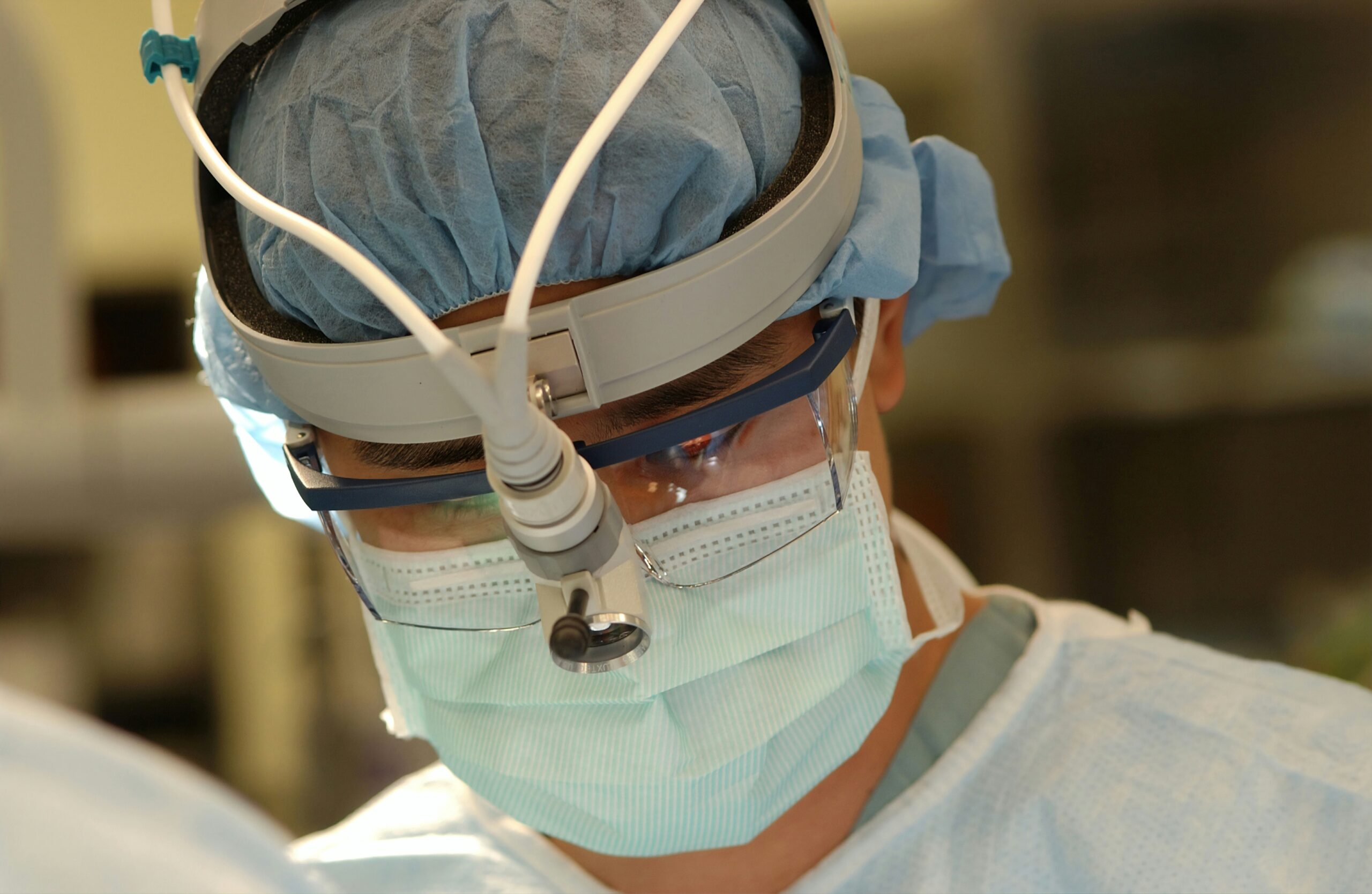Riding a bicycle is not only a great way to stay fit and enjoy the outdoors, but it can also raise concerns about its potential effects on your prostate health. With the increasing popularity of cycling, there has been ongoing debate about whether prolonged periods of riding can lead to prostate problems. In this article, we will explore the potential link between bicycle riding and prostate issues, shedding light on the facts and dispelling any misconceptions. So, hop on your virtual bike, as we take a journey to discover the truth behind this common concern.
Understanding Prostate Problems
What is the prostate?
The prostate is a small gland located just below the bladder in men. It plays a crucial role in the reproductive system as it produces and stores seminal fluid, which nourishes and protects sperm. The size of the prostate varies throughout a man's life, and it tends to grow larger with age. While the prostate is essential for the reproductive function, it can also be prone to various problems.
Common Prostate problems
Prostate problems are quite common in men, especially as they age. Some of the common prostate problems include benign prostatic hyperplasia (BPH), prostatitis, and prostate cancer. BPH occurs when the prostate enlarges, causing urinary symptoms such as frequent urination, weak urine flow, and difficulty starting and stopping urination. Prostatitis is the inflammation of the prostate gland, leading to pain, urinary issues, and sometimes flu-like symptoms. Prostate cancer is the most severe form of prostate problem and requires immediate medical attention. It is essential to be aware of these common prostate problems and take steps to prevent and manage them effectively.
Factors contributing to prostate problems
Several factors can contribute to the development of prostate problems. Age is one of the most significant factors, as prostate problems are more prevalent in older men. Hormonal imbalances, genetic factors, and a history of prostate problems in the family can also increase the risk. Lifestyle factors such as a sedentary lifestyle, poor diet, and obesity can contribute to prostate problems. While it is challenging to control some of these factors, there are certain measures that can be taken to reduce the risk of developing prostate problems. Regular exercise, a healthy diet, and maintaining a healthy weight are crucial for prostate health.
Bicycle Riding Basics
The Physiology of Bicycle Riding
Bicycle riding is an excellent form of cardiovascular exercise that engages various muscle groups in the body. When you ride a bicycle, the movement involves your legs, glutes, core, and upper body, contributing to overall fitness. It also improves cardiovascular health and helps burn calories, making it an ideal exercise for weight management. Additionally, cycling is a low-impact exercise, which is gentle on the joints, making it suitable for people of all ages.
Health benefits of bicycle riding
Regular bicycle riding offers numerous health benefits. It improves cardiovascular health by strengthening the heart and increasing blood circulation. It also helps reduce the risk of heart disease, stroke, and high blood pressure. Cycling is an effective way to control weight and maintain a healthy body mass index (BMI). It can improve muscle tone, especially in the legs and core, and enhance overall strength and endurance. Moreover, cycling is also a great stress reliever, promoting mental well-being and reducing the risk of mental health issues such as anxiety and depression.
Potential risks and health issues associated with bicycle riding
While bicycle riding offers numerous health benefits, it is important to be aware of potential risks and health issues associated with this activity. One of the main risks is the possibility of accidents and injuries, particularly if proper safety precautions are not followed. Road hazards, traffic, and collisions with vehicles can lead to severe injuries. It is essential to use proper protective gear, follow traffic rules, and choose safe cycling routes to minimize the risk of accidents.
Additionally, there are some specific health issues associated with bicycle riding, including musculoskeletal problems such as lower back pain, neck pain, and knee pain. These issues can arise from poor posture, overuse injuries, or improper bike fit. It is crucial to address these concerns to ensure a comfortable and safe cycling experience.

Onset of Prostate Problems due to Cycling
Bicycle saddle and prostate pressure
One potential concern related to cycling and prostate health is the pressure on the prostate gland caused by the bicycle saddle. The traditional design of most bicycle saddles can put pressure on the perineum, the area between the anus and the scrotum where the prostate is located. Prolonged pressure on the perineum can lead to discomfort and potentially affect prostate health. However, it is essential to note that not all cyclists may experience these effects, and individual factors such as anatomy and riding habits play a role.
Duration of cycling and its impacts
Another aspect to consider is the duration of cycling and its impact on prostate health. Engaging in long hours of cycling, especially in an intense or aggressive manner, may increase the pressure on the prostate and potentially contribute to the development of prostate problems. It is important to strike a balance and avoid excessive cycling durations that may negatively impact prostate health.
Effects of cycling techniques on the prostate
Cycling techniques, such as pedaling cadence and body position, can also have an impact on prostate health. Higher pedaling cadence, or the speed at which you spin the pedals, can potentially reduce the pressure on the prostate, as it allows for smoother movements and less overall stress on the perineum. Similarly, maintaining a proper cycling posture, which involves keeping the back straight and distributing the body weight evenly, can help alleviate pressure on the prostate area.
Research on Prostate Issues in Cyclists
Analysis of existing studies
Several studies have been conducted to investigate the potential link between cycling and prostate problems. These studies have examined various factors, including prostate-specific health issues and the prevalence of prostate cancer among cyclists. The research has provided valuable insights into the potential impact of cycling on prostate health.
Contradictions in research results
While some studies suggest a correlation between cycling and prostate problems, there are contradictions in the research findings. Some studies indicate an increased risk of prostate problems among cyclists, while others have found no significant association. The conflicting results may be due to differences in the study design, sample size, and methodology. More research is needed to establish a clear consensus on the topic.
Link between Cycling and Prostate Cancer
Prostate cancer is a major concern when discussing prostate health. Research exploring the link between cycling and prostate cancer has yielded mixed results. Some studies have found a slightly increased risk of prostate cancer among cyclists, while others have not found a significant association. It is important to note that the studies conducted thus far have limitations and more comprehensive research is necessary to fully understand the potential link between cycling and prostate cancer.

Medical Perspectives on Cycling and Prostate Health
Input from Urologists
Urologists, physicians who specialize in the urinary tract and male reproductive system, often provide valuable insights on prostate health. They generally agree that cycling, when done correctly and in moderation, is unlikely to cause significant prostate problems. Urologists emphasize the importance of preventative measures, such as proper bike fit and saddle choice, to minimize potential risks to the prostate gland.
What sports medicine says?
Sports medicine professionals also contribute to the conversation surrounding cycling and prostate health. They highlight the overall benefits of cycling and acknowledge that the potential risks to the prostate can be managed with proper precautions. Proper bike fitting, regular breaks during long rides, and maintaining a balanced exercise routine are some of the recommendations provided by sports medicine experts.
Doctors' advice for cyclists
In general, doctors advise cyclists to be mindful of their prostate health while enjoying this popular form of exercise. It is crucial to choose the right saddle that reduces pressure on the perineum area. Regular breaks and diversifying the exercise routine are also important to prevent prolonged pressure on the prostate and minimize potential risks. Additionally, maintaining a healthy lifestyle, including a well-balanced diet and regular check-ups with a healthcare provider, is recommended to support overall prostate health.
Preventive Measures for Cyclists
Choosing the right saddle
One of the key preventive measures for cyclists is choosing the right saddle. Many modern saddle designs focus on reducing pressure on the perineum area, thus minimizing potential discomfort and risks to the prostate. Saddle selection should consider factors such as width, shape, and cushioning to ensure a comfortable and supportive ride. It is advisable to consult with a knowledgeable professional or bike-shop personnel to find a saddle that suits your body and riding style.
Proper cycling posture
Maintaining proper cycling posture is crucial for prostate health. Adopting a posture that supports good spinal alignment and reduces pressure on the perineum can help minimize the risk of prostate problems. Keeping the back straight, engaging the core muscles, and paying attention to weight distribution are key components of maintaining a healthy cycling posture.
Importance of breaks and recovery
Taking breaks during long rides is essential for both performance and prostate health. Frequent breaks allow the body to recover, reduce the prolonged pressure on the prostate gland, and prevent potential damage. It is advisable to plan rest intervals into your cycling routine and avoid long periods of continuous cycling.
Maintaining a balanced exercise routine
To reduce the potential risks associated with cycling and prostate health, it is important to maintain a balanced exercise routine. Incorporating other forms of exercise into your routine, such as strength training, flexibility exercises, and low-impact activities, can help promote overall prostate and general health. Diversifying your exercise regimen ensures that your body receives a comprehensive workout and reduces the strain on any particular area, including the prostate.

Personal Experiences and Case Studies
Long-term professional cyclists
Personal experiences of long-term professional cyclists can provide valuable insights into the impact of cycling on prostate health. Some professional cyclists have reported experiencing prostate problems, including discomfort and urinary issues. However, it is important to note that other individual factors, such as genetics and overall lifestyle, may contribute to these issues. Personal stories should be considered in conjunction with scientific research to gain a comprehensive understanding of the topic.
Recreational cyclists with prostate issues
Recreational cyclists who have experienced prostate issues may offer further insights into the relationship between cycling and prostate health. It is crucial to assess the specific circumstances and habits of these individuals to identify any potential links. By understanding the experiences of recreational cyclists, researchers and medical professionals can gather valuable information to improve preventative measures and provide tailored advice for cyclists.
Effect on cyclists after modifying habits
Modifying cycling habits, such as saddle choice, posture, and duration of rides, can have a positive impact on prostate health. Some cyclists have reported an alleviation of prostate-related issues after implementing changes suggested by medical professionals. These examples highlight the importance of tailored preventative measures and the potential benefits of adapting cycling habits to support prostate health.
Public Health Recommendations
Government guidelines on cycling
Government guidelines on promoting healthy lifestyles often include recommendations for cycling as a physical activity. These guidelines emphasize the overall health benefits of cycling, including improved cardiovascular health, weight management, and mental well-being. While government guidelines generally do not specifically address the potential risks to prostate health, they stress the importance of safety measures and the adoption of proper cycling techniques.
Health organization views on cycling and prostate
Various health organizations acknowledge the potential risks to prostate health associated with cycling. They recommend incorporating preventative measures to minimize these risks, such as using proper saddles, practicing good posture, and taking regular breaks. Health organizations also stress the importance of maintaining a well-balanced exercise routine that incorporates different forms of physical activity to reduce strain on the prostate.
Recommendations for cycling infrastructure and gear
To promote prostate health among cyclists, recommendations for cycling infrastructure and gear include the development of bike paths and trails that offer safe and comfortable riding conditions. Infrastructure improvements, such as reducing road hazards and increasing separation between cyclists and motor vehicles, can contribute to a safer cycling environment. Additionally, advancements in saddle design and technology can further enhance prostate health by reducing pressure on the perineum.
Alternative Exercise Options for Prostate Care
Exercises that promote prostate health
Apart from cycling, several exercises promote prostate health. Activities that improve cardiovascular health, such as swimming, brisk walking, and jogging, are beneficial for overall prostate health. Strength training exercises that target the lower body, including squats and lunges, can also contribute to prostate health by enhancing muscle tone and strength. Yoga and other flexibility exercises are helpful in promoting good posture and reducing tension in the pelvic area.
Adapting workout routines for those with prostate issues
For individuals with existing prostate issues, modifying exercise routines may be necessary. It is advisable to consult with a healthcare professional or physical therapist to develop personalized workout plans. These plans may involve alternative exercises or modifications to incorporate the benefits of cycling while reducing stress on the prostate. By adapting workout routines, individuals can continue to engage in physical activity while managing their prostate health.
Transitioning from cycling to other sports
If concerns about prostate health persist or if prostate problems arise, individuals may choose to transition from cycling to other sports that pose lower risks. Low-impact activities such as swimming, elliptical training, or rowing offer cardiovascular benefits without placing excessive pressure on the perineum. Exploring alternative sports ensures that individuals can continue to enjoy physical activity while prioritizing their prostate health.
Conclusion: Can Bicycle Riding Cause Prostate Problems?
Summarizing the research findings
The question of whether bicycle riding can cause prostate problems remains complex and inconclusive. Research on the topic has produced conflicting findings, making it difficult to establish a clear relationship between cycling and prostate problems. While some studies suggest a potential association, others do not find a significant link. It is important to consider individual factors, such as anatomy and riding habits, when assessing the impact of cycling on prostate health.
Balancing exercise benefits and health risks
When considering the potential risks to prostate health associated with cycling, it is essential to balance them against the numerous benefits of this popular activity. Cycling offers significant cardiovascular benefits, helps with weight management, and supports mental well-being. With appropriate preventative measures and modifications to cycling habits, the potential risks to the prostate gland can be minimized.
Final thoughts on cycling and prostate health
Ultimately, maintaining prostate health requires a comprehensive approach that includes regular check-ups, a healthy diet, and an active lifestyle. While cycling may pose potential risks to the prostate, it is important to consider the individual context, consult with medical professionals, and implement recommended preventative measures. By making informed choices and adopting a balanced approach, individuals can continue to enjoy the benefits of cycling while prioritizing their prostate health.

